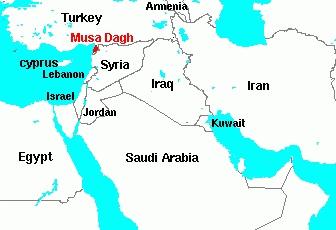

-
Displaced people from the minority Yazidi sect who fled the violence in the Iraqi town of Sinjar, wait for aid at an abandoned building that they are using as their main residence, outside the city of Dahuk, Aug. 25, 2014.
It is extremely sad that Suleiman, one of Iraq’s most famous researchers on the Yazidi minority, on Sept. 18 deceided to burn all the books in his personal library to protest the extermination of Iraq’s minorities.
Suleiman described his message as follows: “It is a religious message aimed at the extremist conflicts that have justified violence toward us for centuries. It is a social message to a hostile environment that has refused to coexist with us, and a political message to the local governments in Iraq and the great powers, which have failed to defend us, though we are in danger of being totally eliminated from our lands.”
He added, “What I did was a scream of protest that I directed to all of humanity. I burned my entire life’s work, hoping to reveal to the world the atrocity that is happening to Iraq’s minorities with the active participation of all factions.”
Saeb Khadr, the Iraqi prime minister’s adviser for minority affairs, told Al-Monitor, “Khadr Suleiman has worked since the 1970s to illuminate Yazidi culture to a wide audience. Today, he burned all of his works because he felt that his writing and defense [of the Yazidis] did not help them, and because no one stood by their side in their catastrophe.”
“[Suleiman] defended the Kurdish identity of the Yazidis to connect them to their social environment in northern Iraq, but Kurdish forces mobilized slowly and failed to defend their families and children, who were left to the mercy of the Islamic State (IS),” said Khadr.


-
It all remind me of when Thor Heyerdahl burned Tigris as a protest against the wars raging on every side in the Red Sea and Horn of Africa – particularly in Ethiopia. It tells how he was refused entry to Ethiopia and Yemen, and his telegram to the UN Secretary General protesting against the wars.


-
It also remind me of the ending of The Forty Days of Musa Dagh (Die vierzig Tage des Musa Dagh), a 1933 novel by Austrian-Bohemian writer Franz Werfel based on true events that took place in 1915, during the second year of World War I and at the beginning of the Armenian Genocide.
Bagradian remains behind after ensuring that the people he led, Juliette and Iskuhi are safely aboard the French and British ships. His reasons are complex and can be traced throughout the novel to the realization that he cannot leave and go into exile again in an internment camp in Port Said, Egypt.
On the way, he experiences a divine presence and confronts the cross on his son’s grave. He is followed by a skirmishing party of Turkish troops. They approach in a crescent—which alludes to the battle formations of the Ottoman armies of the past—and kill him.
Iraqi scholar burns his books to protest Yazidi ethnic cleansing
Filed under: Uncategorized



















